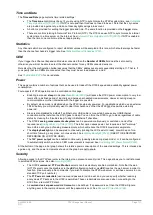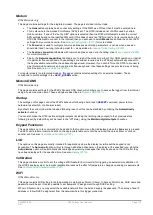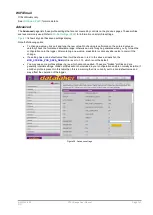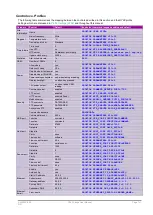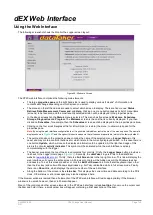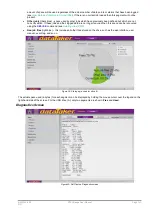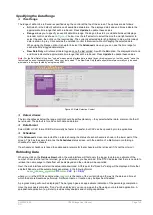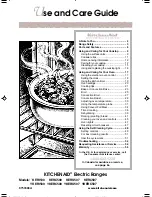
UM-0085-B09
DT80 Range User Manual
Page 150
RG
CSV Data Format
By default data and alarms are returned in standard Comma Separated Value (CSV) format.
The file consists of a number of
rows
. Each row is terminated by a CR-LF sequence.
Each row consists of a number of
fields
(columns), separated by commas. (Semi-colons (
;
) will be used if the
DT80
has
been configured to use a comma as the decimal point character).
Each row consists of the following fields, in order:
•
timestamp (e.g.
2007/12/15 20:49:45.905
)
•
timezone. Currently, this field will always have the value "
n
", meaning "no timezone"
•
data values for first schedule (zero or more fields, one for each loggable channel). Numeric data values are
specified in "mixed" format (may be either standard or exponential format), to 8 significant digits and trailing
zeroes after the decimal point are trimmed. String values are enclosed in quotes, with any control characters
represented in
^
c
form (e.g. a CR character would appear as
^M
).
•
alarm number, alarm state (0-3) and alarm text (see
) for first schedule (three fields; only
present if schedule has one or more loggable alarm channels)
•
data values for second schedule (if any)
•
alarm number, alarm state and alarm text for second schedule (if any)
•
(and so on, for each schedule)
The first row in the file is a
header row
, which contains a descriptive name for each field. For example, the name of a
data value field has the form "
chanName
(
units
)"
, e.g. "
Reactor4 (degC)
"
The first block of rows after the header row contain all data records for the first schedule. The next block of rows contain
all alarm records for the first schedule. Then comes the data records for the second schedule, and so on.
In other words, the CSV data is generated in schedule order, not in time order. However, once it is loaded into a
spreadsheet it is a trivial exercise to re-sort by the timestamp field.
DBD Data Format
Data may also be returned in the
DT80
's native binary (DBD) format. For large files, it can take a significant amount of
time for the
DT80
to convert the data to CSV format, so transferring DBD files can be significantly quicker.
DBD files may be opened by certain third party graphing applications, such as
DPlot
by Hydesoft Computing LLC.
Displaying Real-Time Measurements
The web interface provides two ways of viewing real-time measurements:
•
all channels can be displayed in tabular form, one row for each defined channel
•
selected channels can be displayed using a variety of graphical
mimic
displays
Channel List Screen
Figure 43: Channel list screen


